Gender Equity, Social Impact and Responsibility

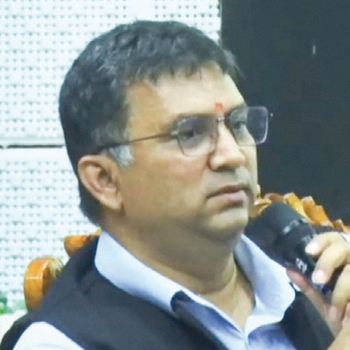
In this panel discussion, experts from various fields talk on how we can equally provide resources and opportunities to everyone, to achieve a fair and equal outcome, and how we can integrate gender equity with social impact as our core responsibility. Corporate Citizen brings you the excerpts from this discussion
PANELLISTS
- Binod Anand, Executive President, World Cooperation Economic Forum and Secretary General, CNRI (Moderator)
- Meenakshi Hooja (IAS) Retd.
- Kanika Baweja, Director and Governing Body Member, Indo-Pacific Chamber of Commerce & Industry (IPCCI) and Global Forum of Commerce & Industry (GFCI)
- Bhimashankar Shetkar, COO, National Dairy Development Board (NDDB) Mrida Limited
- Savitri Singh, Deputy Chief Executive, National Cooperative Union of India (NCUI)
- Vineeta Hariharan, Distinguished Public Policy Leader
- Tripti Khanna, Trustee and Member, Council for Agricultural and Rural Development (CARD)
- D.P. Singh, Secretary, Federation of Community Radio and National VP, Confederation of NGOs of Rural India (CNRI)
- Rakesh Arrawatia, Founder Director, World Cooperation Economic Forum
Binod Anand : What is your (Meenakshi Hooja) perspective on gender equity in the coming years after serving for 45 years as an IAS officer in the Central Administrative Tribunal (CAT) bureau?
Meenakshi Hooja : The terms like ‘Gender Equity’ weren’t prevalent during those times, but they were in practice. I consider myself lucky in these times because, our parents gave us the privilege of equal education, which had started but wasn’t extensively adopted. The steps like providing education to women equally, starts from home and then stretches to build India and the world. During the times of my tenure, fortunately I did not face major discrimination, yet some element of it remained. This was the result of the inclusion of women alongside men in the mainstream.
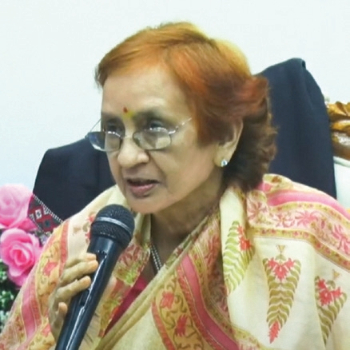
In the existing times, people think that due to the accommodation of men and women separately in many places, it conveys a message of ‘male superiority’. I view this situation from a different angle. When women sit together and have conversations it provides them happiness, and they can express their thoughts openly without hesitation. Hence, I believe we must promote women self-help groups, schools, colleges rather than discouraging them. Initiatives like co-education and coworking exist, through which women have been granted certain preventive acts for their safety and protection.
Equity means ‘Ownership’, indicating fairness in society. I believe there should be differences, but not discrimination against women. Now that the women have entered the mainstream—they are joining the army, police, become civil servants, and also, there are now provisions being implemented in the governance sector and other fields.
I remember, while serving former Governor of Rajasthan, Pratibha Patil, she said that there were times when we spoke about women safety, whereas now we have women ensuring the safety of India. This is a reverse situation which fosters an important change, transformation and health in the environment of the society. Woman’s perspective brings a sensitivity in the administration. We are capable of understanding and solving the issues of both men and women. Gender equity is gender goodness-a boon towards the growth of the nation and the world. When women enter the public domain, their contribution can be increased.
We must never look down upon the contribution of the women who are homemakers, rather refrain from categorisation based on skills and tech, be it high or low. Through the periscope of administration, we talk about problem solving in society and ethics—we should give high recognition to such problem solvers. Nowadays, we are giving awards for those working towards the upliftment of the under-privileged, the women and the youth. The same can be seen in the fields of the judiciary and legislature.
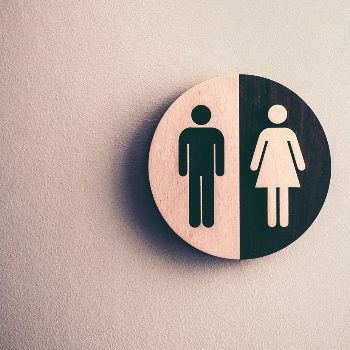
"To come closer to our objective of the social impact, we need to work, learn, adopt and then support our sustainable goals with our full heart, only then we will be able to use them in our cooperative structure"
— Kanika Baweja
Q: What are the different ways of auditing or ways to implement the regulatory compliances for the inclusion of 50% women in the mainstreams?
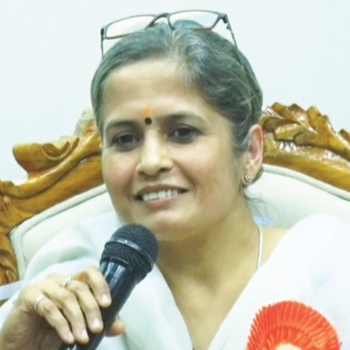
Kanika Baweja: We have lists that come to us under the name of ESG compliances, but when we talk about the cooperative sector, there are numerous resource restrains and methodologies of working. We cannot implement all the ESG compliances as they are, hence, we have to modify them according to their requirements, to be recognised as an ESG compliant. These transformative strategies must be accepted as they are, rather than a ‘strict compliance following’.
When we agree that these strategies are transformative, and that there is a need for us to follow them, be it gender equity, social impact or responsibility over compliance, it is only then that we can implement them on ourselves. When we give someone a certain responsibility, we expect them to fulfil it above the given base line. Similarly, with the inclination to work on the responsibilities, we can apply them easily, otherwise we would be stuck in the paperwork, failing to bring out the true essence of the ESG compliances. To come closer to our objective of the social impact, we need to work, learn, adopt and then support our sustainable goals with our full heart, only then we will be able to use them in our cooperative structure.
Q: We would like to know through the medium of NDDB, what is the first step in the giving ‘2047 Developed India’, a new basis for gender equity? How in different ways the project of bioenergy is helping us grow out from traditional methods and giving options to the world encompassing our capability to transform cow dung waste to bioenergy?

Bhimashankar Shetkar : We cannot attain gender equity in its true terms unless women are financially free and independent. The moment women in the workforce work with equality and acquire financial freedom through the same, they gain respect and fulfill the dream of equality. To fulfill them, our business models should be built in such a way that the outcome of the result should benefit majority of the women.
One of the Harvard Business Review (HBR) case studies is about the Mulukanoor Women Cooperative Dairy (MWCD) society in Warangal, Telangana, established in 2002.The beauty of this cooperative is that it is operated, founded and run solely by women. Excluding the managing director, the board of directors and employees are all females. Women who had milch cattle and already selling milk, were employed here. On their first day, when they had 1500 liters of milk produced to sell in the market and were unable to do so, the women took marketing in their own hands and went door to door to sell the milk by pitching homemaker women in Warangal, about the best quality milk they were selling by being a part of this dairy society.
Talking about bioenergy, where there is good horticulture, the use of cow dung is done righteously, but otherwise it is stacked in a heap. This cow dung has the potential for producing biogas and fertiliser. NDDB is working towards the same and buying cow dung from the farmers, over 100 tons almost every day. In the past two years, we have collected 2.6 crores worth of cow dung from farmers. It is being converted into biogas and this biogas is being used in boilers, replacing diesel. Instead of importing diesel worth 2.5 crores from foreign countries, we are making the fuel out of the cow dung, and through which local economy is created. Mostly, it is tried to distribute the money to the female contributors of this process.
Be it a large or small biogas plant, for the welfare of women workers there, we have started a company named NDDB Mrida Ltd. which is a subsidiary company, that can make Compressed Biogas (CBG), which is equal to Compressed Natural Gas (CNG). It holds the power to run vehicles as well, and towards which we are working at a fast pace. Recently, Maruti Suzuki has bought a stake of NDDB, and they aim to work solely on cattle dung for CBG production across the country. The days aren’t far when cow dung will be exchanged on commodity exchange alongside gold and silver, since its progressing on a great scale.
"Achieving a 50:50 gender ratio is important, but real equity requires that women also have a strong voice in shaping laws and policies. It's time we focus on this qualitative dimension"
— Vineeta Hariharan
Q: What can we do in gender equity to fulfill the compliances through glocal reports? What are the initial steps to challenge the male bastion, which is the prevalent pedagogy in the society? What are the practical solutions through the medium of various organisations like World Cooperative Economic Forum (WCoop-EF), International Cooperative Alliance (ICA) that can practically change our mindsets and thinking?
Savitri Singh : When we talk about gender, people generally tend to think it is an issue about women, we hardly have any men talk about it. Gender equality is a matter that should be taken seriously. I want to highlight the fact that the young audience are the ones that will shape the future and bring gender equality into practice. Gender is often mistaken to be biological difference, but it’s instead a social difference. It is the difference in the upbringing of boys and girls.
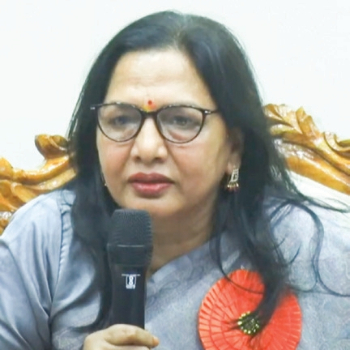
In 2024, the sex ratio of the total population in India is approx. 106.443 males per 100 females. Bachi Karkaria, a renowned journalist, says that women have no rights in India, and that if it’s a female there are numerous other differences that she must face. We all know that women face discrimination based on food, clothing, games, expenditure etc. It is common that excess resources are first spent on male child over the female. After the female child grows up, she must marry and then further fight for her right to work, the right over her earnings and later she also doesn’t have a take on how many children she wants to bear. These are the signs of discrimination, patriarchy which portray an image of male control.
One of the definition of gender equality states, “Gender equality is a socio-economic moral and ethical issue. Gender is not sex difference or biological difference. It is a socialisation process of girls and boys, women and men, which results into various socioeconomic inequalities. Gender equality means equal opportunity and equal access to resources, including participation in economics, politics, decision making, equal rights, etc.” Hence, we must understand that we are equal and require equal number of resources, and the initial step must be taken from home as the saying goes ‘Charity begins at home’. My message to the young audience here is that when you both as couple, are working professionals and in future decide to have children, both should equally divide the tasks and share the burden, that is where the seeds of equality are sowed.
In the 80s, the divorce rates in India were nearly zero, as women used to suppress themselves and continue living in their marriages. Now the women have changed as they are well-educated and earn equally as the men; and the divorce rates are increasing. While we encourage our daughters to become more independent, it is equally important to teach our sons the value of self-development and the responsibility of sharing work equally, especially in households where both partners are contributing financially.
In the cooperative sector there is no proper data about females. I had started collecting a sex disaggregated data in the year 2004-05 and again in 2015, which stated that 65% females work in agriculture and cattle rearing, but not even 30% females are cooperative members at the district, state or even national level. I would like to draw attention to the reality of how women are segregated, especially in the cooperative sector in India.
When we women are working professionally, we must have our place in the mainstream. Talking about compliance, India has the best set of laws and the most recent is of the property rights, but the deep-rooted patriarchy must be erased largely in remote areas, to practise this law effectively. It is high time to include women in the boards, provide cooperative memberships and give recognition to their work.
Q: What are the different policies and ways to change the global thinking mindset of the people, so that in the cooperative economic framework we can think about gender equity?
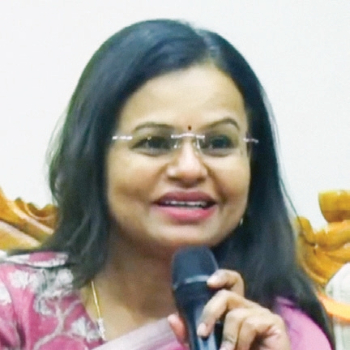
Vineeta Hariharan : India has seen a lot of change in the last decade towards women empowerment. My journey towards being a public policy leader in this space is itself reflective of the empowerment that India is offering.
Gender equity starts with the decentralised model—the stories from the Primary Agricultural Credit Societies (PACS) and recently we have had rules and laws that promote women leadership right from the primary societies.
The government has a model that has the saturation of all the basic services of the administrative units. While efforts have been made to ensure gender equity in Gram Panchayats, similar focus is needed in urban local bodies to achieve true gender equality. Achieving a 50:50 gender ratio is important, but real equity requires that women also have a strong voice in shaping laws and policies. It's time we focus on this qualitative dimension.
The integration of Diversity, Equity, and Inclusion (DEI) into organisational frameworks is imperative. The scope of DEI includes the voices and concerns of all genders. Corporate decision-making is gradually becoming more inclusive, reflecting the distance we’ve travelled on this journey. Encouragingly, both globally and within India, there is a positive narrative around DEI. We must build on this momentum with optimism and sustained commitment.
Q: What can civil society do to amplify the call for gender equity from a glocal perspective, rooted in the Indian context?
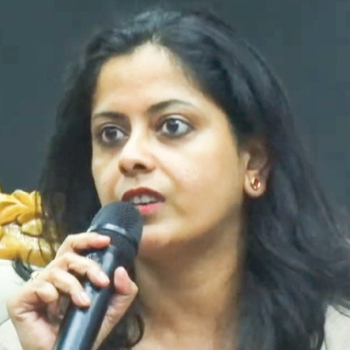
Tripti Khanna: In India, the spirit of Parmarth (altruism), aligns closely with global frameworks like the Millennium Development Goals (MDGs), Sustainable Development Goals (SDGs), and now Environmental, Social, and Governance (ESG) standards. ESG, as a reporting tool, can help us capture both organised and unorganised agricultural activities through a unified lens.
Coming from a social development background, I believe we must go beyond gender equality. Women nurture nature, men contribute as creators—progress must be collaborative. A third dimension is often ignored—age. Those above age 50, bring experience and wisdom, while youth bring innovation and entrepreneurship. India’s diversity requires us to recognise and eliminate unconscious bias. Real inclusion demands active involvement. In the social sector, frameworks like the Global Reporting Initiative (GRI) guide us, but meaningful reporting starts with understanding what to write, where to find it, and how to present it to reflect change and foster inclusion.
Q: Can you (D.P. Singh) share the key challenges you faced in establishing the Federation Community Radio (FCR), and how you overcame them? Additionally, could you highlight the specific steps you took to promote women’s development in the Jhunjhunu region, particularly in Nawalgarh, Rajasthan, through MSMEs? Lastly, what are your views on gender equity, and how do you believe it can be meaningfully achieved in both rural and semi-urban contexts?

D.P. Singh : While we've discussed agriculture, we often overlook artisans—especially women from the communities who aren't involved in farming or animal rearing. A survey conducted with the Department of Science and Technology (DST) revealed they have 6 free hours a day yet earn only `400–`1700 per month through needlework. Recognising this, we raised the issue with the government and were supported in establishing a modern MSME cluster. Trust-building was the biggest challenge, but once women began earning, their confidence and standard of living rose.
Inclusive growth isn't new. Decades ago, in Nawalgarh, corporate families would feed entire communities at weddings. When women from marginalised areas took sweets home, it was seen not as theft but dignity— they will not sell them, only share that they were allowed to take. This spirit of inclusion, once strong, must now be revived and must not get lost in the name of scientific reasoning, but grounded in shared progress.
Q: What is the proposed plan of action to ensure that 50% of leadership roles, such as district collectors, circle officers, and other key administrative positions, are held by women by 2047, as part of building a truly developed and inclusive India?
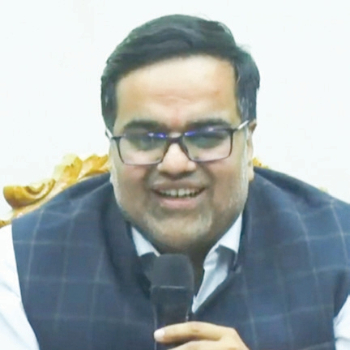
Rakesh Arrawatia : At Lal Bahadur Shastri National Academy of Administration (LBSNAA), I asked a woman Indian Police Service (IPS) officer how many women had joined. She proudly said 50%—a strong example of women’s empowerment in leadership roles that shape the country’s law and order.
Looking ahead, ESG is an emerging market. The Government of India has introduced a new framework—Business Responsibility and Sustainability Reporting (BRSR), which is expected to create a `500–700 crore consulting opportunity over the next 5–10 years. Even small shifts, like replacing plastic bottles with sustainable alternatives, reflect the broader push toward responsible and future-ready business practices. The most critical thing is about the livelihood missions. The National Rural Livelihood Mission (NRLM) had women SelfHelp Groups (SHGs), which has empowered the women on the ground level extensively.